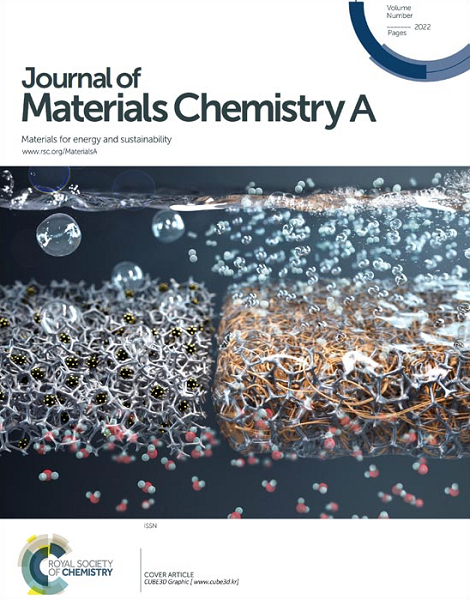Semi-curing combined with low-pressure mechanical pressing strategy for realizing high adhesion and low surface roughness Ag-NW transparent electrodes
IF 10.7
2区 材料科学
Q1 CHEMISTRY, PHYSICAL
引用次数: 0
Abstract
Silver nanowire (Ag-NW) transparent electrodes have emerged as a promising next-generation transparent electrode. However, Ag-NW transparent electrodes suffer from poor adhesion and high surface roughness, limiting their practical application and commercialization. Here, we propose a strategy that combines semi-curing with low-pressure mechanical pressing to produce Ag-NW transparent electrodes with enhanced adhesion and reduced surface roughness. Specifically, the Ag-NWs are embedded into a 15 μm-thick semi-cured PDMS adhesive layer, which lacks fluidity but retains intrinsic bonding properties. The lack of fluidity in the semi-cured PDMS layer reduces the likelihood of PDMS entering the NW–NW gap during the embedding process. As a result, compared to the conventional embedding strategy, our approach not only enhances adhesion between the Ag-NWs and the substrate but also imparts excellent optoelectronic properties to the Ag-NW transparent electrode (T = 90%, Rs = 51.5 ohm sq−1). After embedding the Ag-NWs into the semi-cured PDMS adhesive layer, followed by low-pressure pressing (P < 1500 Pa) and complete curing, the Ag-NW transparent electrode with a scratch resistance greater than 6 N and a surface roughness as low as 29.5 nm was obtained.

求助全文
约1分钟内获得全文
求助全文
来源期刊

Journal of Materials Chemistry A
CHEMISTRY, PHYSICAL-ENERGY & FUELS
CiteScore
19.50
自引率
5.00%
发文量
1892
审稿时长
1.5 months
期刊介绍:
The Journal of Materials Chemistry A, B & C covers a wide range of high-quality studies in the field of materials chemistry, with each section focusing on specific applications of the materials studied. Journal of Materials Chemistry A emphasizes applications in energy and sustainability, including topics such as artificial photosynthesis, batteries, and fuel cells. Journal of Materials Chemistry B focuses on applications in biology and medicine, while Journal of Materials Chemistry C covers applications in optical, magnetic, and electronic devices. Example topic areas within the scope of Journal of Materials Chemistry A include catalysis, green/sustainable materials, sensors, and water treatment, among others.
 求助内容:
求助内容: 应助结果提醒方式:
应助结果提醒方式:


